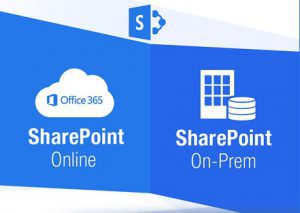What Kind of Capacity Planning is Needed for SharePoint Online?
 One of the most common planning failures – and cause of future headaches when system limitations are reached – is the failure to conduct proper capacity planning before, during, and following your SharePoint upgrade or migration. As you’ve probably learned over the years, your SharePoint environment is a living, breathing life form, with end users and admins constantly making changes. Add to that the ever-changing, evergreen nature of the cloud. Whether consolidating environments, upgrading your version on-prem, rolling out a hybrid solution, or moving everything to the cloud, prior to this activity you need to assess the current system, think about your growth and performance requirements, and plan for your future operational needs.
One of the most common planning failures – and cause of future headaches when system limitations are reached – is the failure to conduct proper capacity planning before, during, and following your SharePoint upgrade or migration. As you’ve probably learned over the years, your SharePoint environment is a living, breathing life form, with end users and admins constantly making changes. Add to that the ever-changing, evergreen nature of the cloud. Whether consolidating environments, upgrading your version on-prem, rolling out a hybrid solution, or moving everything to the cloud, prior to this activity you need to assess the current system, think about your growth and performance requirements, and plan for your future operational needs.
You must understand your current environment, including:
-
- Site and user data (number of users, sites, site collections, overall activity)
- Storage and SQL Server requirements
- Geographical needs of your organization (across sites, collections and farms, understanding their usage patterns)
- Line of business application integrations, use of various services
- Hardware
- Topology
- Performance requirements
- Search architecture
Additionally, you need to think about your future needs, including user growth, estimates on site creation, estimates on database growth, and security and search needs. Based on existing and projected usage and the above environmental factors, you will also need to map out your security requirements, scalability needs, disaster recovery plans, and business continuity strategy. To help you in this process, Microsoft provides a multitude of capacity planning literature:
- The limits and boundaries of SharePoint Server 2013, as well as 2016 and 2019
- Library of available technical case studies for search topology planning
- Articles and case studies on performance and capacity test results for 2013 and recommendations
- Hardware and software requirements for SharePoint Server 2013, SharePoint Server 2016, and SharePoint Server 2019
- Database sizing and performance for SharePoint Server 2013, and for SharePoint 2016 and 2019
- Remote BLOB storage (RBS) in SharePoint
- Out-of-the-box health monitoring and troubleshooting
- Virtualizing SharePoint 2016 servers
- Install SharePoint Server 2019
- Capacity planning and load testing SharePoint Online
Of course, there are a number of partner solutions that can help with your capacity planning and ongoing systems management and reporting. Whether managing SharePoint out-of-the-box or with industry-leading third-party tools, planning for future SharePoint growth — and monitoring and managing that growth as it happens, is critical to the long-term health and success of your platform.
If you’re looking for guidance in this area, one place you can begin is by reaching out to your local user group or even an MVP within your region, most of whom are always happy to answer questions — or point you toward someone who can help, and who can help you better understand your unique business needs, and which tools can help you with capacity planning and ongoing management.




